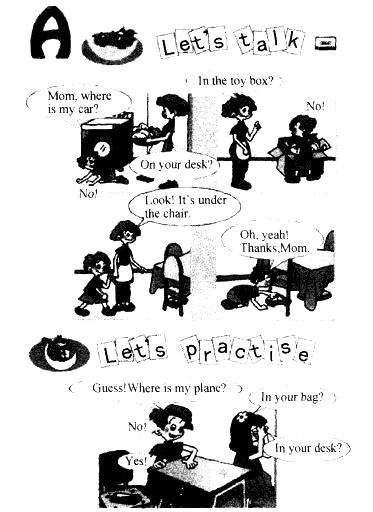当前位置:首页 → 职业资格 → 教师资格 → 中学英语学科知识与教学能力->请阅读Passage2,完成小题。Passage2Thesu
请阅读Passage 2,完成小题。
Passage 2
The subject of ballads,books and films, Robin Hood has proven to be one of popular culture's mostenduring folk heroes. Over the course of 700 years, the outlaw fromNottinghamshire who robs the rich to give to the poor has emerged as one of themost enduring folk heroes in popular culture-and one of the most versatile. Buthow has the legend of Sherwood Forest's merry outlaws evolved over time? Did areal Robin Hood inspire these classic tales?
Beginning in the 15thcentury and perhaps even earlier, Christian revelers in certain parts ofEngland celebrated May Day with plays and games involving a Robin Hood figurewith near-religious significance. In the 19th century, writer-illustrators likeHoward Pyle adapted the traditional tales for children, popularizing them inthe United States and around the world. More recently, bringing Robin to thesilver screen has become?a rite of passage?for directors ranging fromMichael Curtiz and Ridley Scott to Terry Gilliam and Mel Brooks.
Throughout Robin'sexistence, writers, performers and filmmakers have probed their imaginationsfor new incarnations that resonate with their respective audiences. In14th-century England, where agrarian discontent had begun to chip away at thefeudal system, he appears as an anti-establishment rebel who murders governmentagents and wealthy landowners. Later variations from times of less socialupheaval dispense with the gore and cast Robin as a dispossessed aristocrat witha heart of gold and a love interest, Maid Marian.
Academics, meanwhile,have combed the historical record for evidence of a real Robin Hood. Englishlegal records suggest that, as early as the 13th century, “Robehod,” “Rabunhod”and other variations had become common epithets for criminals. But what hadinspired these nicknames: a fictional tale, an infamous bandit or an amalgam ofboth? The first literary references to Robin Hood appear in a series of 14th-and 15th-century ballads about a violent yeoman who lived in Sherwood Forestwith his men and frequently clashed with the Sheriff of Nottingham. Rather thana peasant, knight or fallen noble, as in later versions, the protagonist ofthese medieval stories is a commoner. Little John and Will Scarlet are part ofthis Robin’s “merry” crew-meaning, at the time, an outlaw's gang-but MaidMarian, Friar Tuck and Alan-a-Dale would not enter the legend until later,possibly as part of the May Day rituals.
While most contemporaryscholars have failed to turn up solid clues, medieval chroniclers took forgranted that a historical Robin Hood lived and breathed during the 12th or 13thcentury. The details of their accounts vary widely, however, placing him inconflicting regions and eras. Not until John Major's “History of Greater Britain” (1521), for example, is he depicted asa follower of King Richard, one of his defining characteristics in modem times.
?We may never know forsure whether Robin Hood ever existed outside the verses of ballads and pages ofbooks. And even if we did, fans, young and old, would still surely flock toEngland's Nottinghamshire region for a tour of the legend's alleged formerhangouts, from centuries-old pubs to the Major Oak in Sherwood Forest. What wedo know is that the notion of a brave rebel who lives on the outskirts ofsociety, fighting injustice and oppression with his band of companions, hasuniversal appeal-whether he's played by Erroll Flynn, Russell Crowe or even, ason a 1979 episode of “The Muppet Show,” Kermit the Frog.
Which of the following is closest in meaning to the underlined phrase “a rite of passage” in Paragraph 2?
词义题。根据画线词定位到文章第二段。该段主要讲述了在不同时期,Robin Hood的形象从充满宗教色彩,到融入儿童故事,再到被搬上大荧幕的经历变化。arite of passage所在句子意为“将Robin的形象搬到荧幕上对各位导演来说,已经成为( )”。A项“一件具有里程碑意义的事”,B项“一项头等议程”.C项“一个宗教仪式”,D项“一项特权”。A项最符合原文意思。
请认真阅读下文,并按要求作答。

问题(一):如指导中年段小学生学习上述内容,试拟定教学目标和教学重点。(15分)
问题(二):根据拟定的教学目标,设计课堂教学环节并简要说明理由。(25分)
下面是一位教师的教育案例,阅读并回答问题。
为了让班会开得更成功,我为我们班选了一篇课文改写了剧本。第二天,把我的计划和大家说了说,全班同学都很高兴,这时我听到了 一段小声议论:“老师怎么选这篇课文,又长又不好演。”“你管呢,让你演什么你就演什么呗。”“我可不想演。”听到这儿,我的心一沉,原来是王渺。下课后,我把她叫到办公室请她谈自己对演课本剧的想法。她说:“老师,我觉得您选的课文不好,而且您每次都是写好了剧本让我们演,您应该让我们自己来试一试。”她的话让我突然意识到他们并不希望老师什么都是“包办代替”,他们长大了。于是,我把导演的任务交给了王渺同学,她高兴地接受了任务,开始和同学们商量演哪一课。然后找我做参谋,帮我做道具。课本剧表演得非常成功,我和孩子们一同品尝到了成功的喜悦。
问题:这个案例给我们留下的思考是什么?请你结合新课程理念谈谈自己的看法。(20分)
以下是一位教师执教浙教版第11册《三顾茅庐》的片段,阅读并回答问题。
张飞说:“一个村夫,何必哥哥您亲自去呢?派个人把他叫来得了。”刘备斥责他:“胡说!孔明 是当今大贤。怎么可以随便派个人去呢?”
(在具体的朗读训练之后)
师:什么叫“大贤”?老师先来考考大家。你们知道武艺十分高强的人叫什么?
生:大侠!
师:家里钱非常多的人呢?
生:大款!
师:能够做一桌美味佳肴的人呢?
生:大厨!
师:当今非常出名的歌星、影星叫什么?
生:大腕!
师:在文学、艺术方面具有高深造诣的人?
生:大师!
师:现在你明白什么叫“大贤”了吗?
生:就是指在道德和才华方面非常出众的人。
生:就是指在思想素质和才华能力方面最伟大的人。
问题:结合《语文课程标准》的学习,你认为本案例“词义教学”给你什么启示?(20分)
简述小学德育目标确立的依据。
简述小学生品德发展的基本特征。
在对学生进行心理辅导时,常使用的强化法属于( )。
对预防沙眼来说,以下哪种做法是正确的?( )
根据教学评价的功能,可将其分为( )。
按学生的智力测验分数和学业成绩把学生分成不同的班组进行学习,这是( )。
“自信、坚强、勤奋”描写的是人的( )特征。